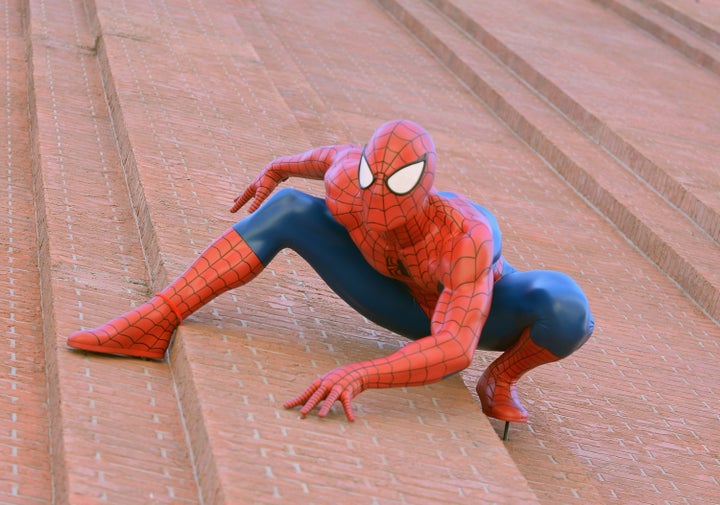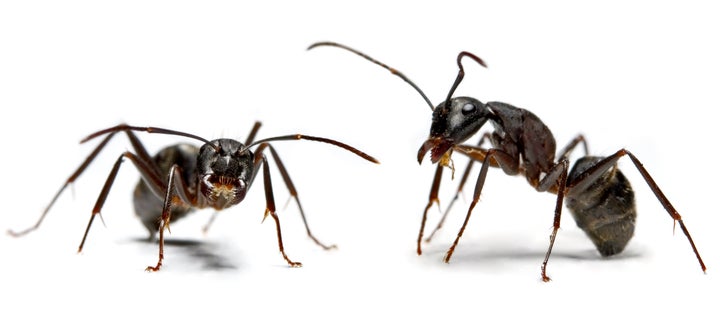
Spider-Man's agility and wall-climbing powers have been thrown into serious question.
Scientists in England say the fleet-footed superhero wouldn't be able to scale walls in real life, even after being bitten by a radioactive spider.
Researchers at the University of Cambridge claim he'd need gigantic feet if he wanted to stick to the sides of skyscrapers. And more than 80 percent of the front of his body would have to be covered in sticky-type pads.
"If a human, for example, wanted to climb up a wall the way a gecko does, we'd need impractically large feet -- and shoes in European size 145 or U.S. size 114," study co-author Walter Federle said in a press release.
The findings were published in the journal Proceedings of the National Academy of Sciences on Monday.
The university's department of zoology compared the weight and footpad size of 225 climbing animals. Researchers found that the sticky footpads on accomplished climbers, such as geckos and spiders, were in fact restricted by their body size.
The researchers also discovered that the pads would have to cover 40 percent of a person's body -- or 80 percent of their front -- if they were to move in a way similar to those animals on vertical or inverted surfaces.

"As animals increase in size, the amount of body surface area per volume decreases -- an ant has a lot of surface area and very little volume, and a blue whale is mostly volume with not much surface area," said lead scientist Dr. David Labonte.
Bigger and heavier species need more sticking power to cling to vertical surfaces, but have less body surface available, he said.
"This implies there is a size limit to sticky footpads as an evolutionary solution to climbing -- and that turns out to be about the size of a gecko," Labonte added, saying larger climbing creatures use different methods to climb, such as their claws.

The findings could prove key to developing large-scale bio-inspired adhesives, which currently only work on small areas, the researchers said.
"Our study emphasizes the importance of scaling for animal adhesion, and scaling is also essential for improving the performance of adhesives over much larger areas," said Labonte. "There is a lot of interesting work still to be done looking into the strategies that animals use to make their footpads stickier -- these would likely have very useful applications in the development of large-scale, powerful yet controllable adhesives."
Also on HuffPost:
